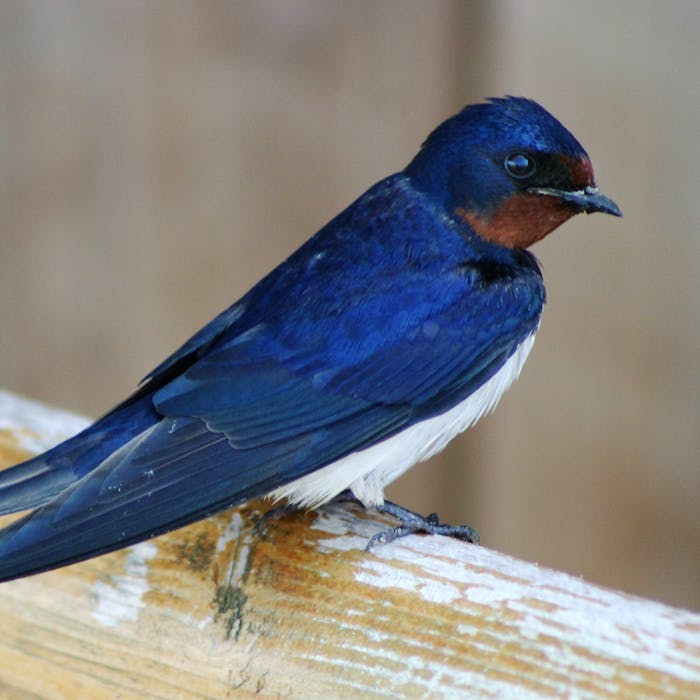
Swallow - a much-loved summer migrant
The familiar British swallow is actually the Barn Swallow (Hirundo rustica), the most widespread species of swallow in the world. Its summer migration to Northern Europe has made the bird a symbol of summer.
Swallows are small birds with dark, glossy-blue backs, red throats, pale underparts and long tail streamers. They are extremely agile in flight and spend most of their time on the wing. They are widespread breeding birds in Britain, arriving in April and leaving in October.
They feed on insects which are caught on the wing and are particularly fond of open pasture with access to water and quiet farm buildings. The distinctive under-the-eaves nest of mud can often be seen on low rise buildings - particularly in more rural areas.
Before they migrate back to their wintering grounds in Africa, they can be seen gathering to roost in wetlands, particularly reedbeds.
British swallows spend their winter in South Africa. They travel through western France, across the Pyrenees, down eastern Spain into Morocco, and across the Sahara. Some birds follow the west coast of Africa, avoiding the Sahara altogether.
Swallows tend to migrate mainly during daylight hours, probably so they can glean the odd insect as they go. They can cover around 200 miles a day, averaging speeds of around 20 miles per hour. Migration is tough on these birds, however, in particular the crossing of the Sahara Desert, which can be gruelling. Weather patterns can be helpful if the winds are favourable and the weather warm, but deep low depressions resulting in storms, rain and cold conditions can make the trip extremely perilous, and many will perish on the way.
Once they have arrived in their overwintering quarters, they will often communally roost in vast numbers in reed beds, such as at Mount Moreland situated on the north coast of KwaZulu in Natal, South Africa. Here, viewing platforms have been made for people to see the amazing spectacle of up to 3 million swallows coming in to roost.
Further reading
Links to external websites are not maintained by Bite Sized Britain. They are provided to give users access to additional information. Bite Sized Britain is not responsible for the content of these external websites.
